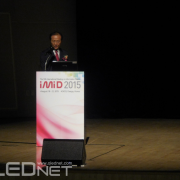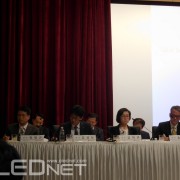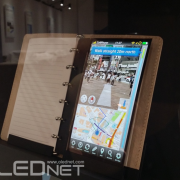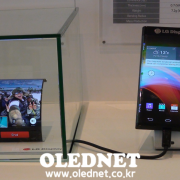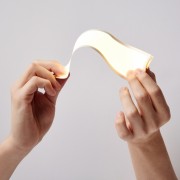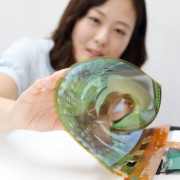[IMID 2015] LG Display Reveals Detailed OLED Plans
During the keynote session of IMID 2015 (August 18 – 21), LG Display’s Sang Deog Yeo, the head of OLED division revealed LG Display’s intention to change the world with OLED together with everyone and strength in OLED industry expansion. Yeo explained that the most important factor in the success of large area OLED is strong conviction in OLED’s success and courage; he also announced further investment for OLED as future growth stimulus.
Yeo reported that TV’s first revolution was a change from black and white TV to color. The second revolution was the appearance of flat panel display and that the third revolution will be OLED. He explained that the key factors in TV panels are design and picture quality. He evaluated that these factors are advancing separately in other display while OLED is improving these issues together.
Explaining in more detail, Yeo reported that OLED has high design freedom as OLED structure is simple, a self-emitting light without BLU. Additionally, each pixel of OLED can operate independently and actualize true black, leading to differentiated picture quality.
In the beginning, LG Display struggled in applying WRGB technology and oxide TFT to OLED TV, which resulted in almost 0% of yield. Even within the company, there were opinions that oxide TFT application to Gen8 panel or larger will be almost impossible. However, the effort including introduction of external compensation circuit and coplanar structure, and compensation algorithm application to brightness and color brought LG Display’s current success of OLED TV mass production.
Yeo announced that much like how LG Display solved OLED TV’s technological problems of the past, they will improve the oxide TFT mobility to 50. He also revealed that LG Display is searching for a method of applying top-emission technology to mass production in order to improve transparent and flexible OLED technology, and researching light shutter technology and improved plastic substrate application technology.
LG Display recently announced their decision to invest approximately US$ 9,300 million centering around OLED. During the keynote session, Yeo reported that LG Display will increase the large area OLED panel’s production rate through investment, specifically from current 600 thousand units to 2 million units in 2017. He also announced that they will expand Gumi Gen6 line which will be used to increase production rate of small to medium-sized OLED panels and plastic OLED panels.
Although there has been speculation regarding this investment, through this keynote speech, it can be forecast the investment will be used in specific roadmap of large and small to medium-sized OLED. For the progress of OLED industry, which is growth stimulus of the future, Yeo emphasized the need for closer cooperation between materials, components, manufacturing equipment, and set companies, and laboratories and universities.

